What to do if you have a swarm of honey bees in the East Devon area.
Please contact one of our swarm collectors from the list below who operates in your post code area. Alternatively, go to the British Beekeepers interactive swarm page to find the nearest beekeeper.
| Post Code Area | Beekeeper | Home | Landline | Mobile |
|---|---|---|---|---|
| EX5 | David Palfrey | Whimple | 01404 823 750 | 07702 326 856 |
| EX5 | James Garwood | Whimple | 07740 460 541 | |
| EX8, EX9 | Bryan Stewart | Lympstone | 01395 263 097 | 07828 675 571 |
| EX11 | Nick Silver | West Hill only | 01404 812 478 | 07834 483 910 |
| EX10, EX12, EX13, EX24, DT7 | Richard Simpson | Colyton | 07900 492 242 | |
| EX13 | Peter Field | Hawkchurch | 07739 936 309 | |
| EX13 | Peter Weller | Churchill | 01297 325 23 | 07989 685 983 |
| EX13, EX14, EX24 | Alasdair Bruce | Stockland | 07479 474 392 | |
| EX13 | Bob Muckett | Tytherleigh, Chardstock | 01460 220 389 | 07971 317 350 |
| EX13 | David Chambers | Hawkchurch | 01297 678 686 | |
| EX13 | Dan Durrell | Whitford | 07724 653 867 | |
| EX13 | Simon Foster | Membury | 01404 881 787 | 07946 378 794 |
| EX14 | Nigel Boulton | Weston | 07730 926 809 | |
| EX14 | Mary Boulton | Weston | 07714 303 434 | |
| EX14, EX11 | Steve Minshall | Gittisham | 07704 173 428 | |
| EX14 | Iain Morison | Wilmington | 07957 831 006 | |
| EX14 | Louis Owen | Upottery | 07463 599 925 | |
| EX14, EX15 | Stan Wroe | Broadhembury | 01404 841 323 | 07925 549 443 |
| EX24 | David Rice | Colyton | 07450 288 599 | |
| TA20 | Maurice Wakeling | Chard | 01460 646 53 |
This is what a swarm of honeybees looks like!
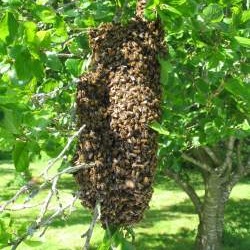
Look alikes!
Other insects can sometimes be confused with honey bees. Bumble bees, solitary bees, wasps, hornets and hover flies may have similar yellow and brown marking but will not be present in such large numbers as honey bees in a swarm.

The honey bee
This is the honey bee. Note the furry body that attracts pollen grains. The bee brushes pollen into the pollen baskets on the back legs and takes it back to the hive.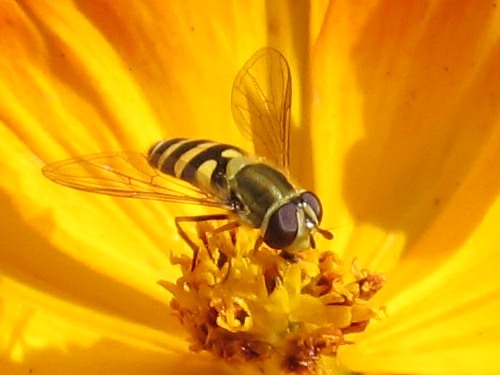
The hoverfly
The small yellow and black hoverfly can be mistaken for a bee as it often frequents the same flowers for nectar. A good insect for gardeners as the hoverfly grubs eat greenfly.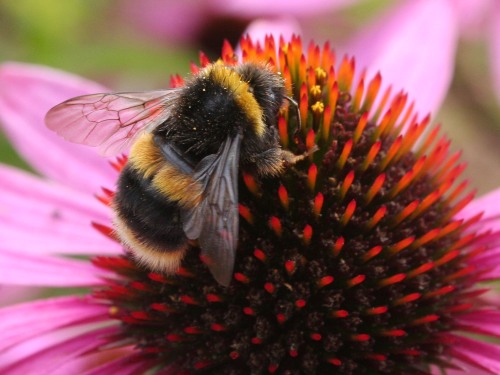
Bumble bees
There are twenty-two species of bumble bee in the UK, usually large and furry with distinctive bands of coloured hairs. This one is the white tailed bumblebee.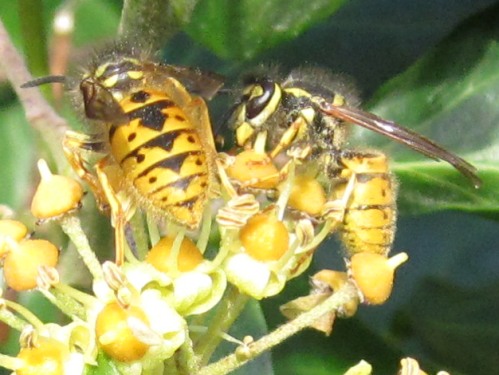
Queen wasps
These two queen wasps are feeding on ivy. The worker wasps are smaller with similar yellow and black patterns. They can predate on honeybees.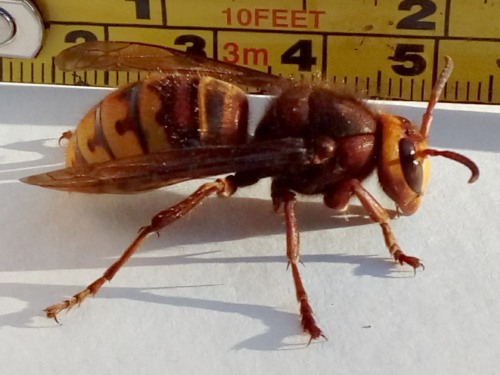
European hornet queen
At 3½cm long the European hornet queen is bigger than any similar insect you are likely to see in the UK. The workers are smaller with similar markings.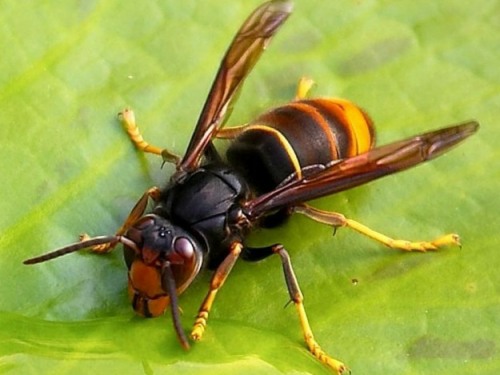
Asian hornet
The Asian hornet is not yet established in the UK but may be in the future. Note the yellow legs and the single broad yellow band near the tail.
Honey bees do not nest in the ground so insects coming and going from burrows will not be honeybees. See ‘Bees in Nest Boxes’ below.
Bees in Nest Boxes
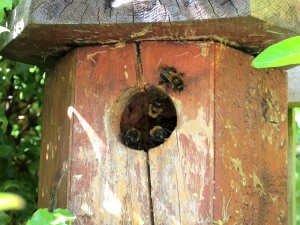
We are increasingly finding bees in nest boxes in East Devon. These bees are more than likely to be Tree Bumblebees (Bombus hypnorum) which are a relatively new species in this area. They are between 10 and 14mm long, have rust / orange coloured hairs on the upper part of the body and a whitish tail.
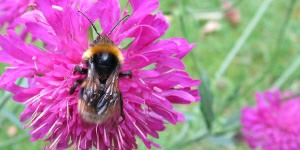
They pollinate all kinds of fruit, flowers and vegetables so, if possible, try to leave well alone.They will vacate the nest box at the end of the season.
The Swarming Process
Swarming is a natural process by which bees multiply their colonies. Usually a swarm will emerge from the hive and land on a nearby branch, bush or post, or even under the eaves of a roof, where they will form a large hanging cluster of bees.
They will send out a few scout bees, who will look for a new site to build their home. Whilst waiting for the scout bees to complete their task, the swarm is normally docile as all the bees have taken on stores of food for the journey and they need to conserve supplies.
The swarm will stay in the cluster for a period of time that may be as short as a few minutes, or may be hours or even days. Finally, when the swarm has decided where its new home will be they will take to the air and fly off in the right direction.
If the cluster is within reach then a beekeeper may be able to capture the swarm in a skep or box and take them to an apiary where they can be housed in a hive. Once the swarm has moved off to their new home it may be more difficult to capture them.
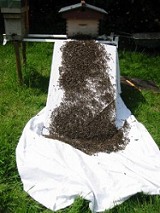
This photo shows a swarm being ‘hived’ by emptying them onto a cloth sloping up to their new front door.
Bees will naturally climb upwards and seek a dark cavity. At first all is confusion, then they turn and head up the slope and disappear into the hive!
If you’re lucky you may see the queen among the throng. Once the queen has taken up residence you can be fairly certain the swarm will not fly off again.